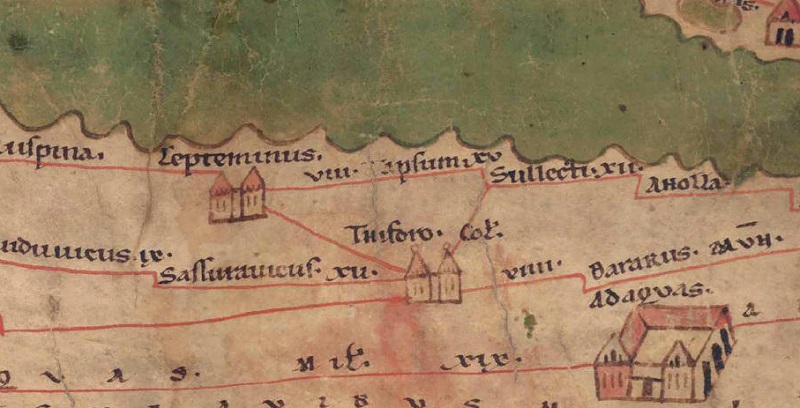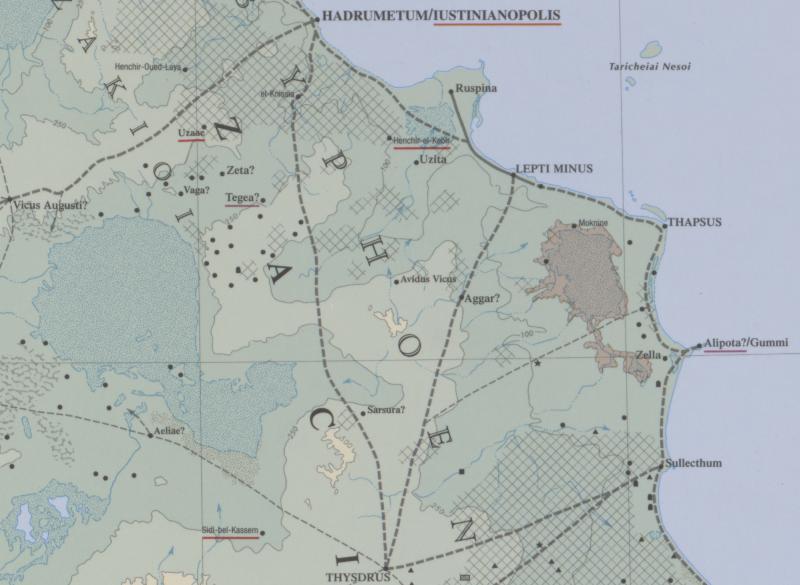
Tabula Peutingeriana – Pantalla individual
| Topónimo (simplificado): | Tapsum |
| Nombre (moderno): | Ras-Dimas |
| Imagen: |  Al detalle de la imagen |
| Topónimo antes | VIII Lepteminus |
| Topónimo después | XV Sullecti |
| Imagen alternativa | --- |
| Imagen (Barrington 2000) |
 |
| Imagen (Scheyb 1753) | --- |
| Imagen (Welser 1598) | --- |
| Imagen (MSI 2025) | --- |
| Pleiades: | https://pleiades.stoa.org/places/324827 |
| Área: | África Proconsular |
| Tipo de topónimo: | Topónimo sin símbolo |
| Cuadrícula: | 5C3 |
| Color del topónimo: | negro |
| Tipo de viñeta: | --- |
| Itinerario: |
|
| Nombres alternativos (diccionarios): | Thapsos (DNP) |
| Nombre A (RE): | Thapsos [3] |
| Nombre B (Barrington Atlas): | Thapsus (33 H1) |
| Nombre C (TIR / TIB /otros): |
|
| Nombre D (Miller): | Tapsum |
| Nombre E (Levi): |
|
| Nombre F (Ravenate): | Tapsum (p. 88.45) |
| Nombre G (Ptolemaios): | Θάψος (4,3,10) |
| Plinius: |
|
| Strabo: |
|
| Datación del topónimo en la TP: | --- |
| Fundamento para la datación: |
|
| Comentario al topónimo: |
Kommentar (Talbert): |
| Bibliografía: |
Miller, Itineraria, Sp. 904; |
| Última elaboración: | 04.03.2025 10:08 |
Cite this page:
https://www1.ku.de/ggf/ag/tabula_peutingeriana/trefferanzeige_es.php?id=1742 [zuletzt aufgerufen am 17.11.2025]